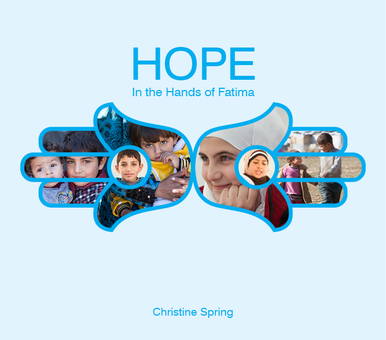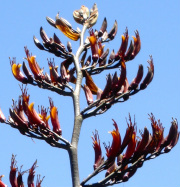
Christine Spring
This is a book of images and portraits with a message concerning the plight of Syrian refugees marooned in Lebanon.
H.O.P.E. is an acronym for the UNICEF programme which assists the refugee camps, and is also the basis for the structure of this hard-covered book. The design revolves around shades of blue, and a motif of outstretched hands, reflecting the concept of the Hand of Fatima, which is explained towards the end of the book. Colours abound in the photography, especially in the blue and violet habibs worn by the Syrian women, but also in the western brand clothing of the kids.
Christine Spring joined Mike McRoberts and cameraman, and Sonny Bill Williams, for the visit. But any celebrity aspect is not highlighted, other than a few introductory shots of the film crew, and some later ones showing SBW listening and learning.
One of the best shots of the group shows the kiwi blokes looking over some refugees towards a Syrian woman in black and purple dress carrying a cast iron or metal fitting on her head, and oblivious to the arrival of the westerners. On the opposite page is a photo of a boy poised on a tyre in the middle of a stream full of various forms of waste and discarded objects, while groups of women and children sit on the bank above. The latter image could have been spread over two pages of the layout, but most choices for the size of the images seem about right, if not always in the best sequencing possible.
Most of the later images are close-ups of children as individuals, in a group, or with their mothers. This is effective but somehow also intrusive.
I do have a couple of critical points. Even though there is a structure to the book, and clear sections, there is no contents page. And in trying to keep to the H.O.P.E. themes there is a bit of a sacrifice for what could have been a more effective photo-essay. I also think that the ‘Hands of Fatima’ concept could have been placed at the beginning rather than near the end. And there is also a caption of sorts for every photograph, with some relatively long explanations. This might help a younger reader, but seems rather unnecessary at times, as some of the images speak for themselves. After certain aspects of the life in the camp are explained, and cultural practices examined, I think that the reader can draw their own conclusions without a rhetorical question.
This book is well worth a look, but probably best used in an educational setting.
Author: Christine Spring
Publisher: Beatnik
Available: bookshops

 RSS Feed
RSS Feed
